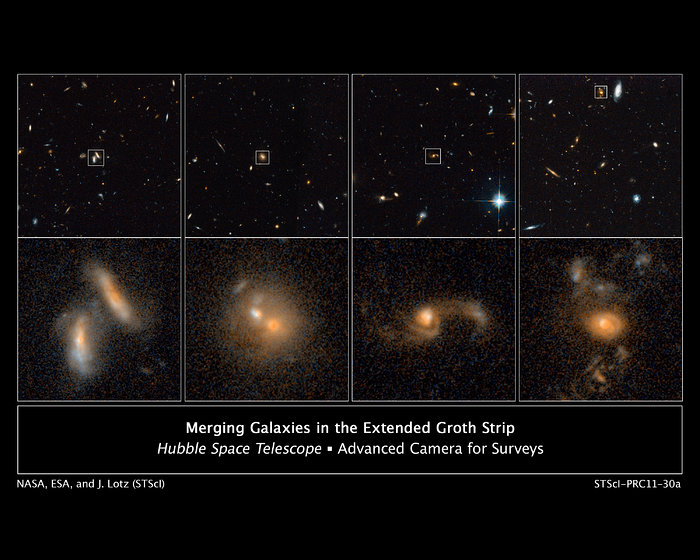Merging galaxies in the Extended Groth Strip
These images from the NASA/ESA Hubble Space Telescope show four examples of interacting galaxies far away from Earth.
The galaxies, beginning at far left, are shown at various stages of the merger process.
The top row displays merging galaxies found in different regions of a large survey known as the All-Wavelength Extended Groth Strip International Survey (AEGIS). The images were taken in 2004 and 2005 by Hubble's Advanced Camera for Surveys.
More detailed views of those galaxies are shown in the bottom row of images. The image at far left shows a close pair of galaxies that are just beginning to interact. The next image reveals two galaxies that are coalescing, yet still have two distinct cores. The third image displays a merging system with distorted spiral arms. The image at far right reveals the union of two galaxies, which still show signs of an irregular structure.
By studying many galaxy interactions at various distances from Earth, astronomers can measure the rate at which galaxies merge over time. This information yields important clues about how galaxies have changed throughout the universe's history.
Credit: